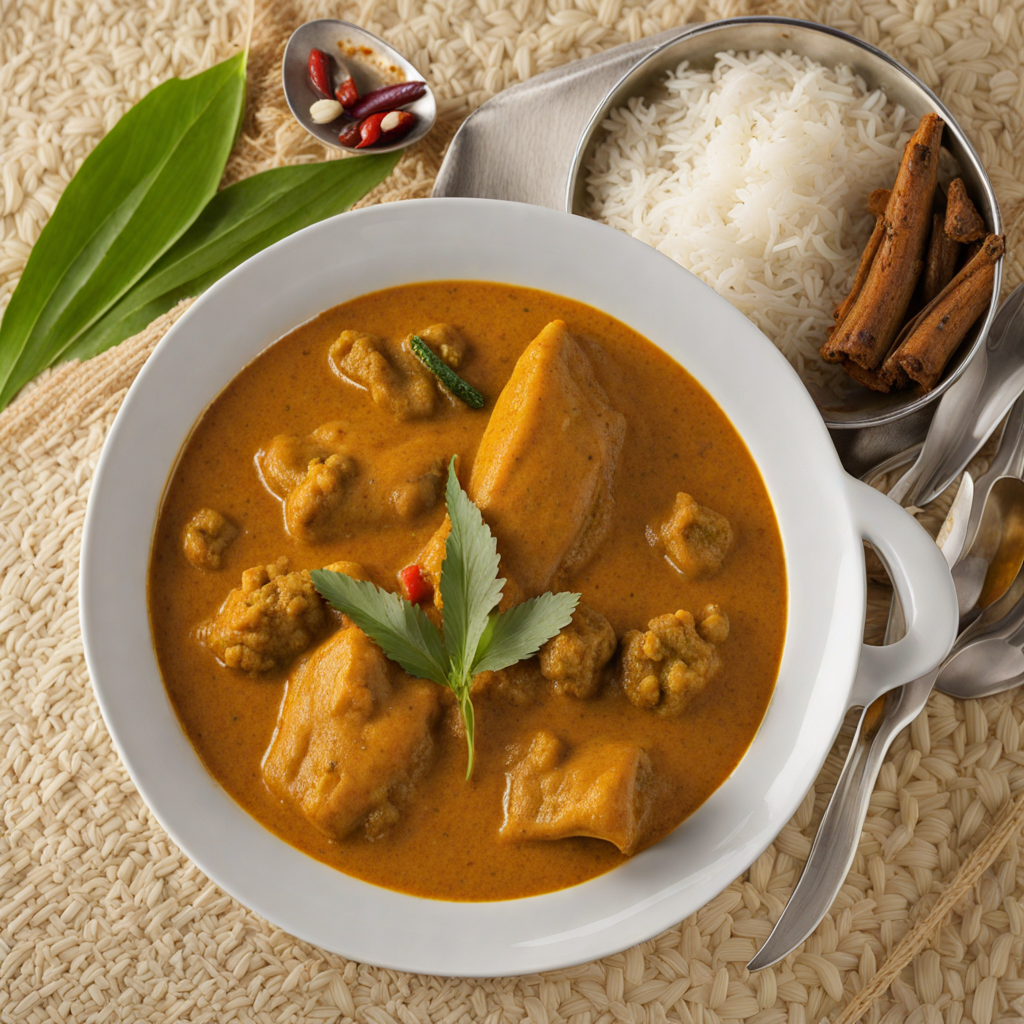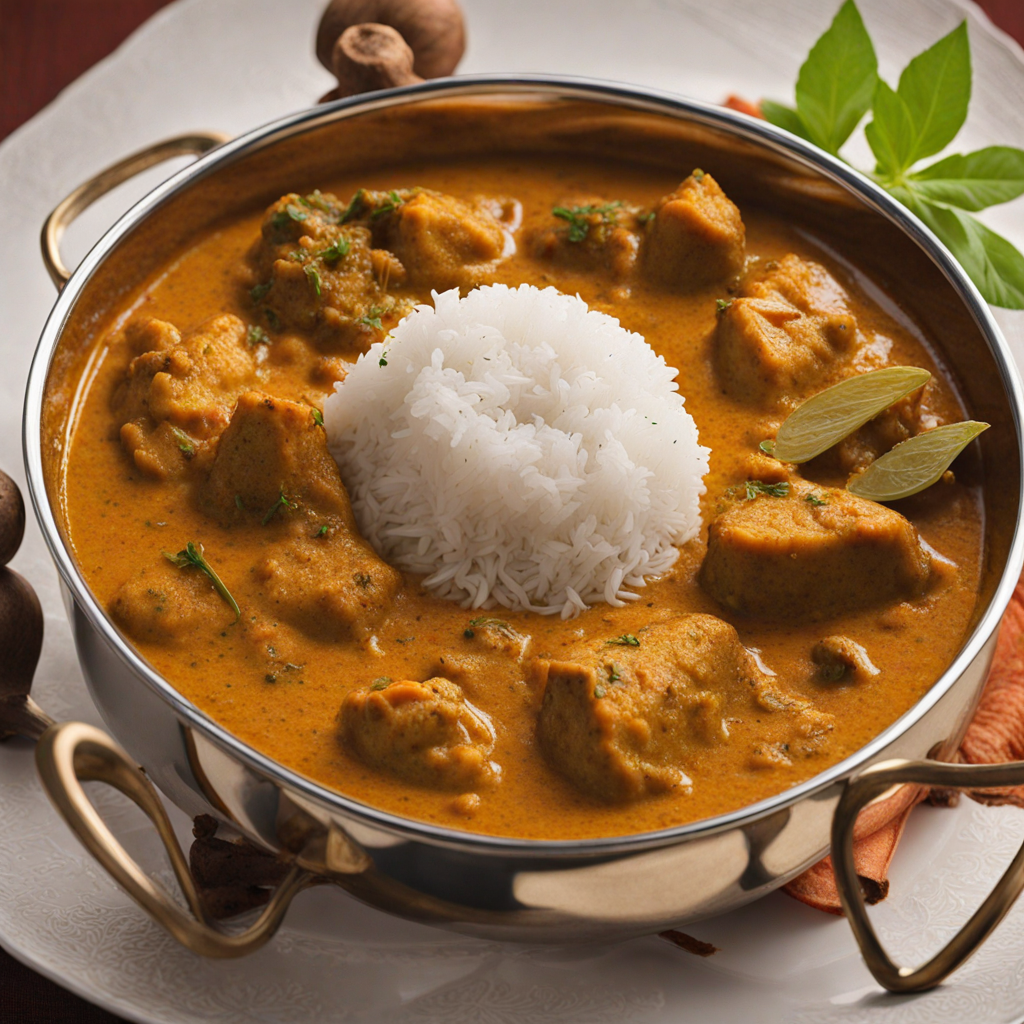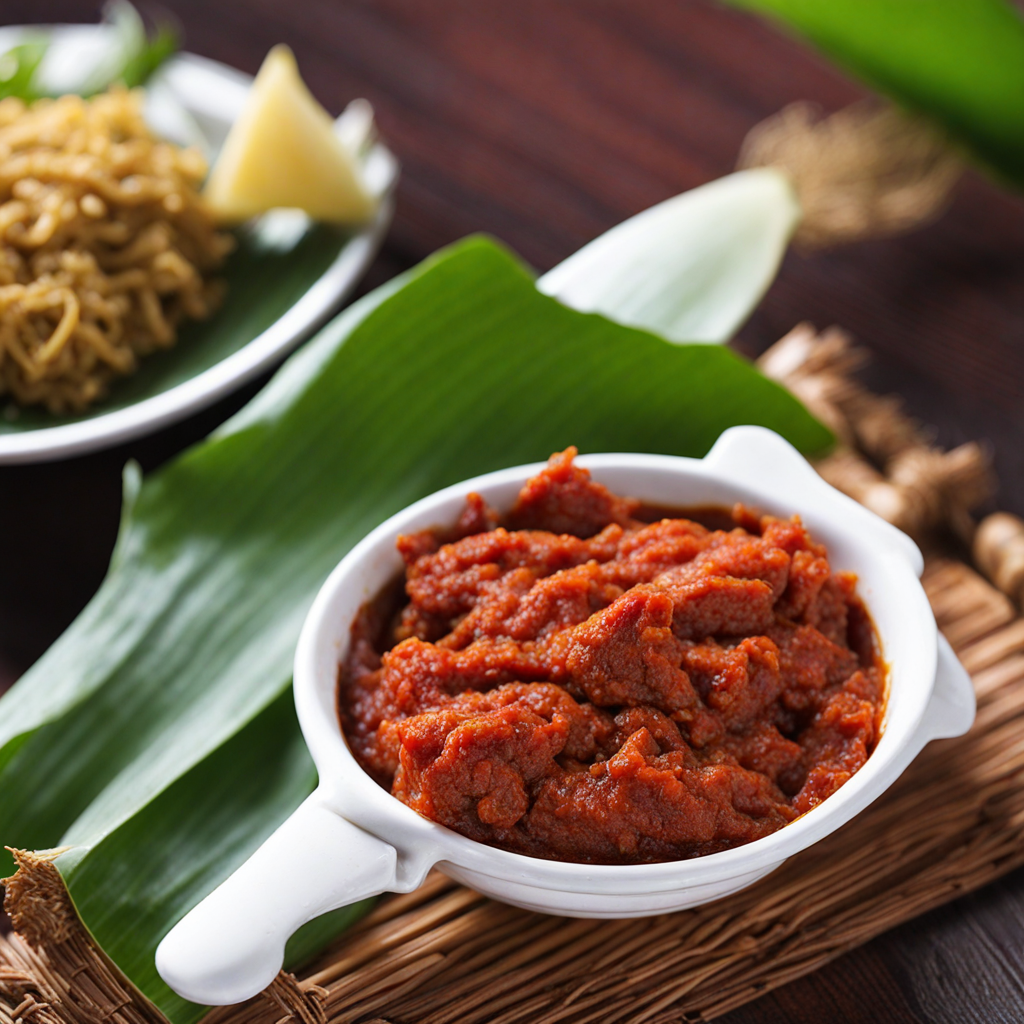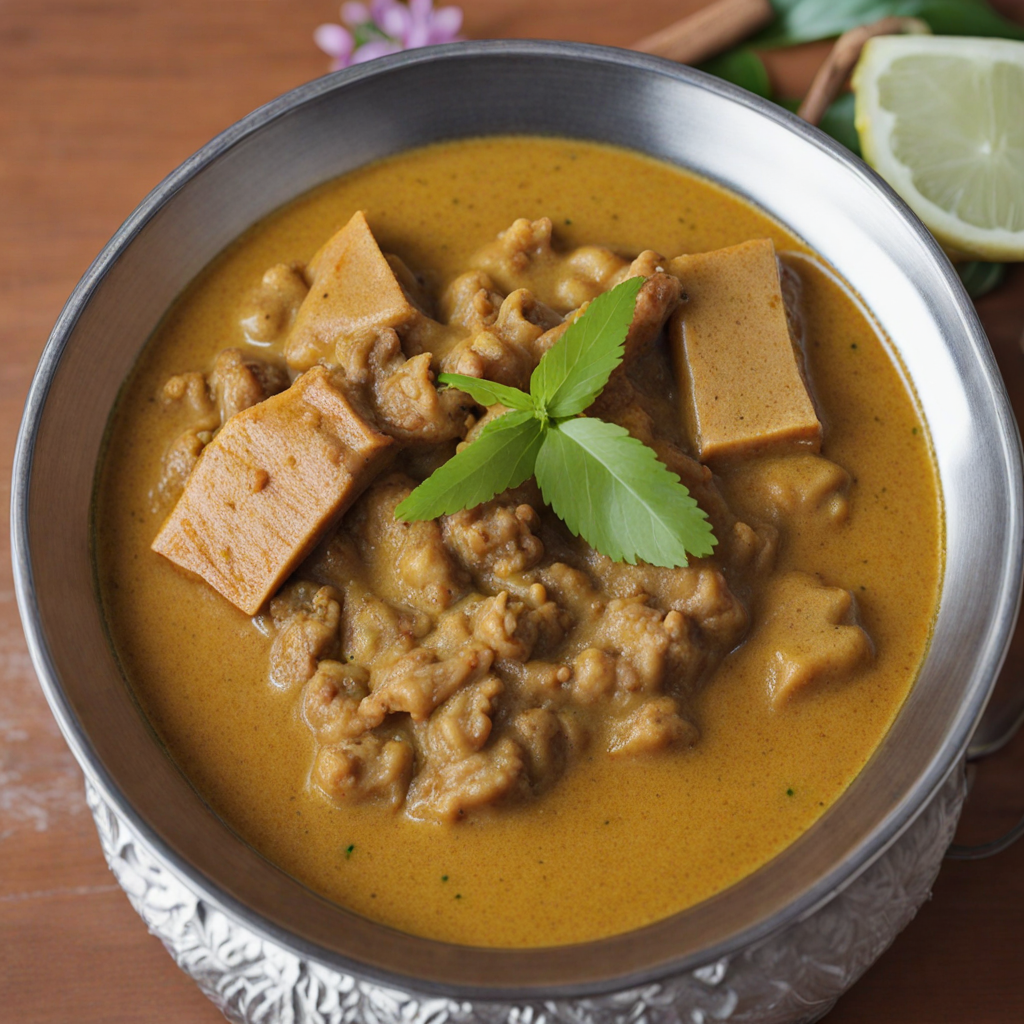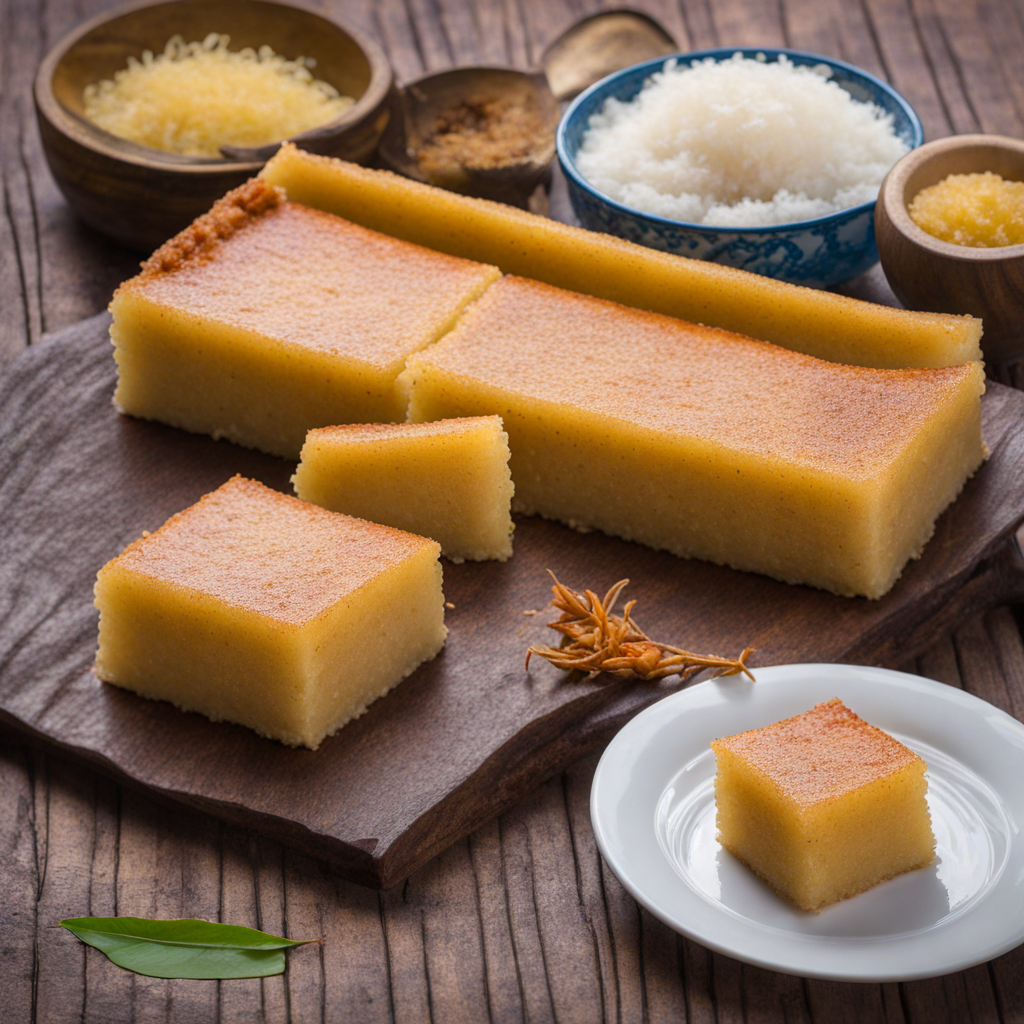Maldivian Curry
‘ދިވެހި ކަރި’ (Dhi Vaehun Kuri) is a traditional Maldivian dish, also known as Maldivian curry, that beautifully encapsulates the rich culinary heritage of the Maldives. This dish has its roots in the islands' historical reliance on the ocean, with seafood being a staple in the local diet. The Maldives, an archipelago of over 1,000 coral islands, is surrounded by bountiful waters, making fish the predominant protein source. The dish is a perfect representation of the country's culture, where flavors are influenced by the local environment and the availability of fresh ingredients. The flavor profile of Dhi Vaehun Kuri is characterized by its vibrant and aromatic spices, which create a harmonious blend with the freshness of the seafood. Typically made with tuna, the dish features a medley of spices, including turmeric, chili, and coriander, which impart warmth and depth. The use of coconut milk adds a creamy texture and subtle sweetness that balances the spices, creating a comforting dish that is both hearty and satisfying. The overall taste is a delightful interplay of savory and slightly spicy notes, making it a favorite among locals and visitors alike. Preparation of Dhi Vaehun Kuri involves a few key steps that highlight the importance of fresh ingredients. First, the tuna is cut into bite-sized pieces and marinated with spices to enhance its flavor. This marination process allows
How It Became This Dish
The Story of ދިވެހި ކަރި: A Culinary Treasure of the Maldives #### Origins of ދިވެހި ކަރި ދިވެހި ކަރި, known as "Dhivehi Kandu Kuri" in the Maldivian language, translates to "Maldivian Fish Curry." It is a beloved dish that encapsulates the essence of Maldivian cuisine, reflecting the country's geographical bounty and cultural influences. The Maldives, an archipelago of 1,192 coral islands, is surrounded by the Indian Ocean, making fish the cornerstone of the Maldivian diet. Historically, the indigenous people of the Maldives relied heavily on fishing and agriculture for sustenance, leading to the development of a cuisine rich in seafood and spices. The origins of Dhivehi Kandu Kuri can be traced back to the early settlers of the Maldives, who were influenced by trade with Indian, Arab, and Southeast Asian cultures. The introduction of spices such as turmeric, chili, and coconut—ingredients that play a pivotal role in the dish—can be attributed to these interactions. Maritime trade routes allowed for the exchange of not only goods but culinary practices, which helped shape the Maldivian food landscape. #### Cultural Significance Dhivehi Kandu Kuri is more than just a dish; it is a symbol of Maldivian identity and community. Traditionally, it is prepared for gatherings, celebrations, and special occasions, underscoring its significance in social and cultural contexts. The preparation of the dish often involves family members coming together, sharing stories, and fostering bonds through the act of cooking. The communal aspect of preparing and enjoying Dhivehi Kandu Kuri reflects the strong sense of community prevalent in Maldivian culture. Additionally, the dish is an embodiment of the Maldivian way of life, where the ocean is not only a source of food but also a source of livelihood and cultural heritage. Fishing is not just an economic activity; it is an integral part of Maldivian traditions, with various fishing techniques and rituals passed down through generations. As such, Dhivehi Kandu Kuri serves as a reminder of the importance of the ocean in shaping the lifestyle and culture of the Maldivian people. #### Development Over Time As the Maldives evolved, so did its culinary traditions, including Dhivehi Kandu Kuri. The dish has retained its core components—fresh fish, coconut milk, and spices—but has also adapted to the changing tastes and influences over time. The influx of tourism in the late 20th century introduced new ingredients and cooking techniques, leading to a fusion of flavors that has further enriched Maldivian cuisine. In the past, Dhivehi Kandu Kuri was primarily made with locally caught fish such as tuna, which is abundant in Maldivian waters. Fishermen would catch their daily haul and use the freshest ingredients available. The curry itself is typically flavored with a blend of spices such as garlic, ginger, and chilies, combined with coconut milk to create a creamy and aromatic sauce. As tourism grew, chefs began experimenting with different types of fish, incorporating varieties such as snapper and grouper, which are also popular in the Maldives. The development of Dhivehi Kandu Kuri has also been influenced by international culinary trends. Chefs in luxury resorts and hotels have reimagined the dish, presenting it in gourmet styles while maintaining its traditional roots. This evolution has made Dhivehi Kandu Kuri accessible to a global audience, allowing more people to experience the unique flavors of Maldivian cuisine. #### Ingredients and Preparation The preparation of Dhivehi Kandu Kuri is an art form that showcases the freshness of its ingredients. The dish typically begins with the selection of fish, which is often marinated with a blend of spices to enhance its flavor. The base of the curry is made from coconut milk, which adds richness and depth to the dish. The use of fresh herbs, such as curry leaves and pandan leaves, is common, imparting a fragrant aroma that elevates the dish. To prepare Dhivehi Kandu Kuri, the fish is first sautéed with onions, garlic, and ginger until golden brown. Then, spices are added, followed by coconut milk, allowing the flavors to meld together as the curry simmers. Traditionally served with steamed rice or flatbreads, the dish is best enjoyed hot, often accompanied by side dishes such as pickled vegetables or sambal. #### Modern Interpretations In recent years, as Maldivian cuisine has gained recognition on the global stage, chefs have begun to reinterpret Dhivehi Kandu Kuri, incorporating modern culinary techniques and presentations. Fusion variations of the dish have emerged, combining elements from other culinary traditions while still honoring its origins. For instance, some chefs might incorporate tropical fruits or local vegetables to enhance the dish's flavor profile. Despite these modern adaptations, the essence of Dhivehi Kandu Kuri remains unchanged. It is still a dish that brings people together, celebrating the rich flavors of the Maldives while embracing the evolving nature of culinary traditions. #### Conclusion In conclusion, Dhivehi Kandu Kuri is more than just a fish curry; it is a reflection of the Maldives' rich heritage and cultural identity. Its origins are deeply rooted in the country's geography and history, while its evolution showcases the adaptability of Maldivian cuisine in the face of modern influences. The dish holds a special place in the hearts of the Maldivian people, serving as a reminder of their connection to the ocean and their communal values. As the Maldives continues to navigate the challenges of globalization and tourism, Dhivehi Kandu Kuri remains a culinary treasure, inviting people to experience the flavors and traditions of this beautiful archipelago.
You may like
Discover local flavors from Maldives


